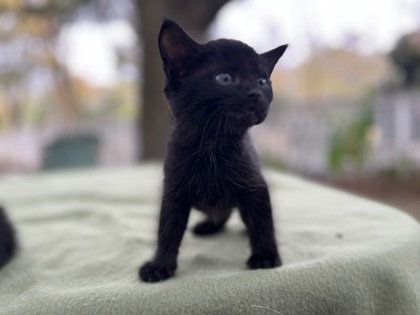
Meet Laura & Bobby
At Hallie Hill Animal Sanctuary, our mission to provide love and care to our animal residents is only made possible through the dedication and passion of our team members. One such remarkable individual is Laura Tudor, who not only works part-time with us but also volunteers her time and energy to make a difference in the lives of our animals.
Laura’s journey with animals started at a young age. Growing up in Chicago, she dreamt of becoming a veterinarian. Though life took her on a different path, leading her to Charleston via Florida State University (Go Noles!), her love for animals never waned. Laura’s professional life has been diverse, encompassing sales, education, and significant contributions to various non-profits. This rich background gives her the unique skills and empathy needed to excel in animal care.
Laura began her involvement with Hallie Hill as a volunteer. Her dedication and hard work quickly stood out, leading her to take on a part-time role focusing primarily on our canine residents. However, her love for animals doesn’t stop there. Whenever she gets a chance, she can be found sneaking
over to assist with our community cats, ensuring they receive the care and attention they deserve.
One of Laura’s favorite activities at the sanctuary is distributing cookies to all the dogs. This simple act of kindness is eagerly anticipated by our dogs and highlights Laura’s nurturing spirit. While she insists she doesn’t play favorites, Laura has a special bond with Simon, a playful dog she enjoys throwing the ball to whenever possible. Outside of her time at the sanctuary, Laura stays active by jogging and instructing yoga, embodying a balanced lifestyle of fitness and philanthropy.
Among the many dogs at Hallie Hill, Bobby’s story is particularly touching. Bobby is an eight-year-old hound who arrived at our sanctuary from an overcrowded shelter. Despite his hardships, Bobby’s gentle and sweet nature remained intact. Recently, Bobby underwent surgery to repair his knee. The procedure was a success, and he is now on the road to recovery, thanks in large part to the loving care provided by our team, including Laura. Bobby’s resilience is truly inspiring, and he continues to charm everyone he meets with his calm demeanor and hopeful eyes.
Bobby dreams of finding a forever home where he can spend his days in comfort and peace. His story is a testament to the resilience of animals and the transformative power of compassionate care. We are confident that with a bit of patience and love, Bobby will make a wonderful addition to a loving
family.
If you’re inspired by Laura’s story and Bobby’s journey, we encourage you to get involved with Hallie Hill. Whether through volunteering, donations, or simply spreading the word, every little bit helps us continue our mission of providing care and finding forever homes for our beloved animals.













